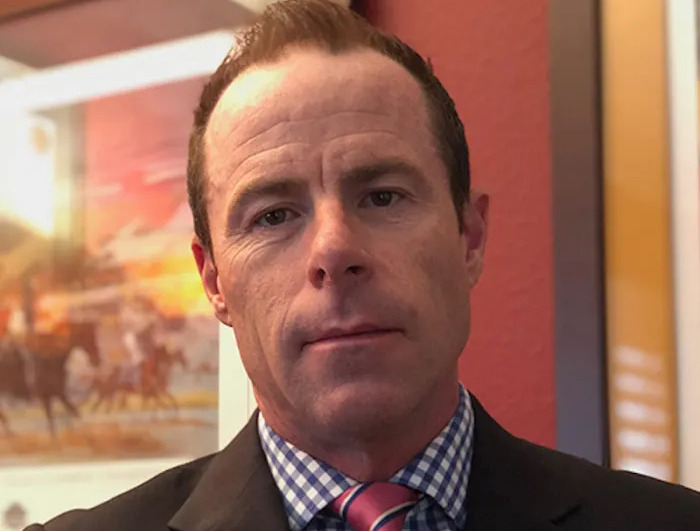
Nearly two years after the rollout of HISA’s racetrack safety initiatives – and one year on from the introduction of its federal drug testing program – Daniel Ross discovers a marked contrast in views on progress so far
 Come July 1 this year, the racetrack safety portion of the Horseracing Integrity and Safety Act will have been in effect for two years (under the auspices of the HISA Authority), while May 22 will mark the one-year launch of the federal drug testing program, overseen by the Horseracing Integrity and Safety Unit (HIWU).
Come July 1 this year, the racetrack safety portion of the Horseracing Integrity and Safety Act will have been in effect for two years (under the auspices of the HISA Authority), while May 22 will mark the one-year launch of the federal drug testing program, overseen by the Horseracing Integrity and Safety Unit (HIWU).
These anniversaries are underpinned by all sorts of large numerical markers. By the end of last year, approximately 33,000 covered persons, 55,000 horses and 1,000 veterinarians had registered with HISA.
In a report issued last month, HIWU reported over 50,000 samples collected since the start of the drug testing program, with 21,750 individual horses tested.
But what do some of those involved with the sport at the state level think of the rollout of HISA’s twin safety and drug testing programs? TRC spoke with representatives from state commissions in California and Washington, to put flesh to the bones of these statistics.
Their answers highlight something of a divide in the way the federal program is viewed between those states with bigger budgets and deeper resources, and those juggling more meager checkbooks.
California: ‘For people to not see the reasons for it would just be denied reality’
A common refrain out of the Golden State these past couple of years has been of their requiring only minor adjustments of the furniture to make room for HISA.
Just ask California Horse Racing Board (CHRB) executive director, Scott Chaney. “It’s not hyperbole to say we have one of the best safety programs in the country, if not the world,” Chaney said.
“While we’re one of the states that probably least needs federal oversight right now, but for people to not see the reasons for it would just be denied reality.”
 At the same time, the rollout of the federal drug and safety programs hasn’t exactly been smooth sailing, Chaney admits – not that calm waters should have been anticipated.
At the same time, the rollout of the federal drug and safety programs hasn’t exactly been smooth sailing, Chaney admits – not that calm waters should have been anticipated.
“The CHRB has been in business since 1933, so over 90 years – to expect the rollout [of HISA] to be perfect among some 20 states is foolhardy,” he said, adding: “I really respect HIWU’s willingness to really assess the program to meet the needs of racing while also meeting the goals of the originating legislation.”
To prove his point, Chaney highlighted the evergreen issue of HISA’s atypical findings policy, which covers positive tests likely to have been caused by environmental contamination.
HISA CEO, Lisa Lazarus, recently issued an open letter outlining steps federal regulators have taken to minimize the risk of environmental contamination.
Still, stakeholders continue to raise serious concerns that not enough is being done in this area to protect trainers, especially when the ultimate insurer rule places the burden of responsibility squarely on their shoulders.
Should the parameters of the atypical findings policy be expanded to include more substances, for example, like the common diabetes drug, metformin, which has caused a rash of positives since the federal drug testing program began? These include Royal Ascot-winning trainer George Weaver, currently under an interim suspension for a metformin positive from March. Weaver is vowing to fight a a possible maximum two-year ban for this particular medication violation.
Nevertheless, Chaney reckons HISA has got this particular equation right. “Environmental contamination runs the spectrum, right?” he said. “There are the extreme cases where somebody sneaks into your barn unbeknownst to anybody and intentionally drugs your horses with the intention of getting you in trouble.”
The other point of the spectrum, said Chaney, are those unintentional actions that can lead to a positive test. Grooms urinating in stalls, for example. Or backstretch staff that take prescription drugs handling the horse on raceday without taking the necessary hygiene precautions.
“In 2024, if your groom is urinating in the stall, you have not done your job as a trainer – and so, when we talk about environmental contamination, there’s no right answer,” said Chaney.
“We have to come up with what the best system is – and to not expect HISA/HIWU to regulate safety and anti-doping and medication control more strictly than was happening pre-their existence is missing their entire point.”
 Earlier this year, HISA reported that the equine fatality rate among its regulated tracks last year showed a decrease from the previous year, and was lower than the national average.
Earlier this year, HISA reported that the equine fatality rate among its regulated tracks last year showed a decrease from the previous year, and was lower than the national average.
Last month, however, California’s regulators reported that the equine fatality rate in the state was creeping up after years of declines.
Does Chaney see any connection between the implementation of HISA and California’s increased fatality rate? More pointedly, did HISA’s rules on intra-articular injections – which haven’t been as stringent as California’s – play any part in these statistics?
“I think probably not,” said Chaney. “It’s multifactorial, and probably has nothing to do with the switch over to HISA. In general, most of their rules mirror the ones we have.”
(Here it should be noted that HISA has proposed rules before the FTC that would make its intra-articular injection policy stricter in many ways than California’s pre-HISA)
“I think in California, we’re getting to such low numbers, we’re at the point now where preventing each and every additional fatality is going to be difficult,” said Chaney. “What we’re really struggling with now – including federal regulators – is these sudden deaths, and really getting a handle on why they occur, and how to prevent them.”
Ultimately, said Chaney, a more unified industry is a stronger one, highlighting the well-documented rash of fatalities at Santa Anita five years ago. “In 2019, California was kind of alone, with other states leaving us on an island amid the media firestorm,” he said.
“In 2024, we’re in this together, partly because there is a federal regulator and partly because horse racing is a national issue.
“We all have to remember why HISA exists in the first place – and HIWU by extension –and that was because there was a perception in the country that we weren’t promoting safety, and that our drug testing program wasn’t sufficient.”
Washington State: ‘The cost of this is huge’
Boasting a much smaller horse racing footprint than California is Washington State to the north, represented by its lone Thoroughbred track, Emerald Downs, framed against the snow-capped shadow of the state’s distinctive Mt. Rainier.
 “Up here, we run 50-some days, five months of the year,” said Washington Horse Racing Commissioner, Doug Moore (right), who also chairs the Association of Racing Commissioners International (ARCI).
“Up here, we run 50-some days, five months of the year,” said Washington Horse Racing Commissioner, Doug Moore (right), who also chairs the Association of Racing Commissioners International (ARCI).
“Our horsemen feel like the small tracks and the medium-sized tracks, that I would put us in, are going to be squeezed out of business eventually,” Moore added.
In explanation, Moore pinpoints three primary areas of concern, led by the almighty dollar. “The cost of this is huge,” he said.
According to Moore, HISA assessed Washington State a little over $319,000 last year, and just over $419,000 this year (after factoring in credits offered by HISA to individual jurisdictions).
While the state legislature appropriated funds to help offset these costs (that the commission has issued to the industry in the form of grants and other payments), financial assistance from the state in relation to HISA has ended, meaning Washington’s racing industry will be solely responsible for these fees from next year onwards, said Moore.
Though individual jurisdictions wield some latitude as to how to cover these fees, “whatever way it gets twisted around, the owners end up paying it – and we’re struggling to keep owners in this business as it is,” said Moore.
The second area of concern revolves around the fees meted out for medication violations – a scenario unfairly impacting those horsemen and women operating at the lower levels of the sport, said Moore.
“It’s the same penalty whether you’re running at Emerald Downs for a $10,000 purse or Santa Anita for a $50,000 purse,” said Moore. “That’s not a consistent penalty.”

It’s not just the sanctions that Moore is concerned about; attorney fees can rack up quickly and exorbitantly. HIWU offers pro-bono legal representation to stakeholders whose gross household income is $75,000 or less. But for those who don’t qualify, these cases can burn a hole through the pocket.
An owner with trainer Jonathan Wong recently said that he has paid out over $500,000 on attorney fees fighting a metformin positive from last year. What is more, the case appears far from over.
Moore suggests a sliding scale for medication violation fines that resembles that in place for riding crop violations, where fines are based on the purse of the race. “Why they cannot do that for owners and trainers for these therapeutic medication violation cases is beyond me,” he commented.
 A third area of concern revolves around the sanctions meted out for positive tests associated with common human recreational drugs.
A third area of concern revolves around the sanctions meted out for positive tests associated with common human recreational drugs.
Since the ADMC program went into effect, there has been a spate of post-race and vets’ list positives for methamphetamine and cocaine, which are classified as banned substances.
At the beginning of the program, a positive methamphetamine test came with a potential two-year ban and $25,000 fine for the responsible trainer. Because of the prodigious use of drugs among backstretch workers, however, HISA has softened its enforcement approach in this area.
HISA has submitted rules to the Federal Trade Commission (FTC) that would see a positive test for any drug among a list of “substances of human abuse” result in a maximum provisional suspension of 60 days, with leeway for a reduced provisional suspension if the trainer can provide evidence of where and how the positive occurred.
HISA has already adopted this lighter enforcement approach while the FTC is going through the approval process for these proposed rules.
HISA CEO Lisa Lazarus has defended these new sanctions as a necessary deterrent. That, “and actually, our rules are amongst the most lenient with regards to meth because we do take into consideration the risks on the backside,” she recently explained, highlighting the case of harness trainer Clarence Foulk, suspended for one year for a methamphetamine positive.
But is the 60-day maximum provisional suspension still too harsh, given the possible risks of contamination from drug-using personnel?
Moore believes so, especially for those trainers whose barns comprise those blue collar-type horses typically found at tracks like Emerald Downs. “If a trainer gets a 30- or 60-day suspension up here, that’s their entire season over,” he said.
Stepping back to evaluate HISA’s implementation more broadly, Moore sees positive steps forward in the arena of uniformity, most pointedly when it comes to drug testing.
“I think the original goal of uniform medication rules was a worthwhile goal,” said Moore. “But I think they should have focused on one thing at a time to get it right before they started expanding.”
• Visit the HISA website and the HIWU website
Last-chance saloon: Racing has failed miserably – now it must work hand-in-hand with HISA
Charles Hayward: No looking back – HISA is the only way forward
View the latest TRC Global Rankings for horses / jockeys / trainers / sires


